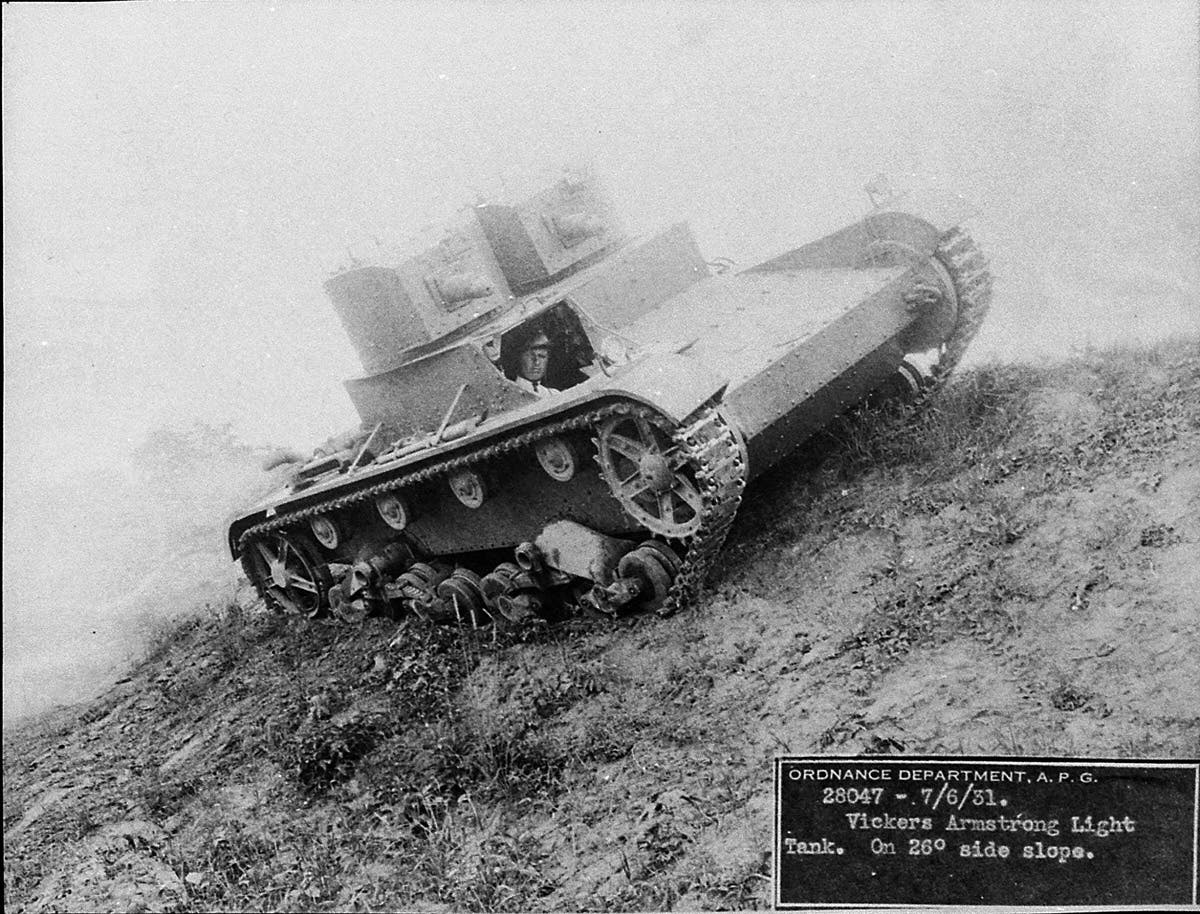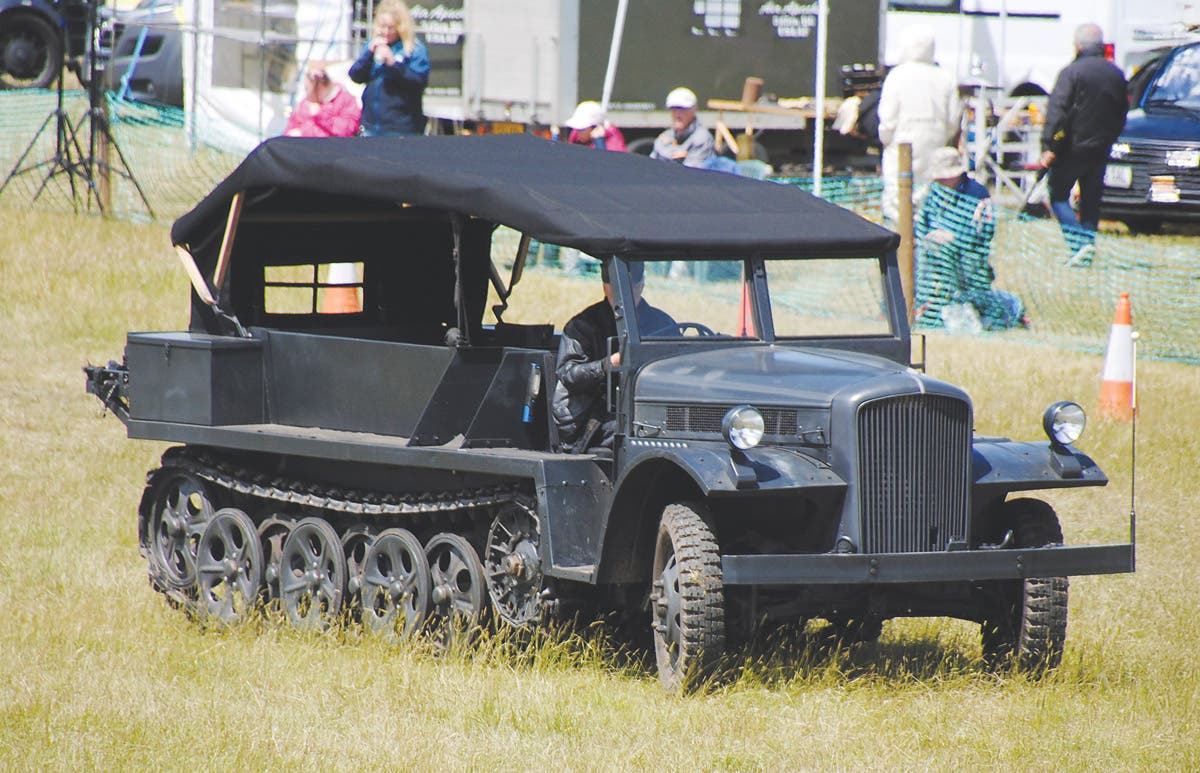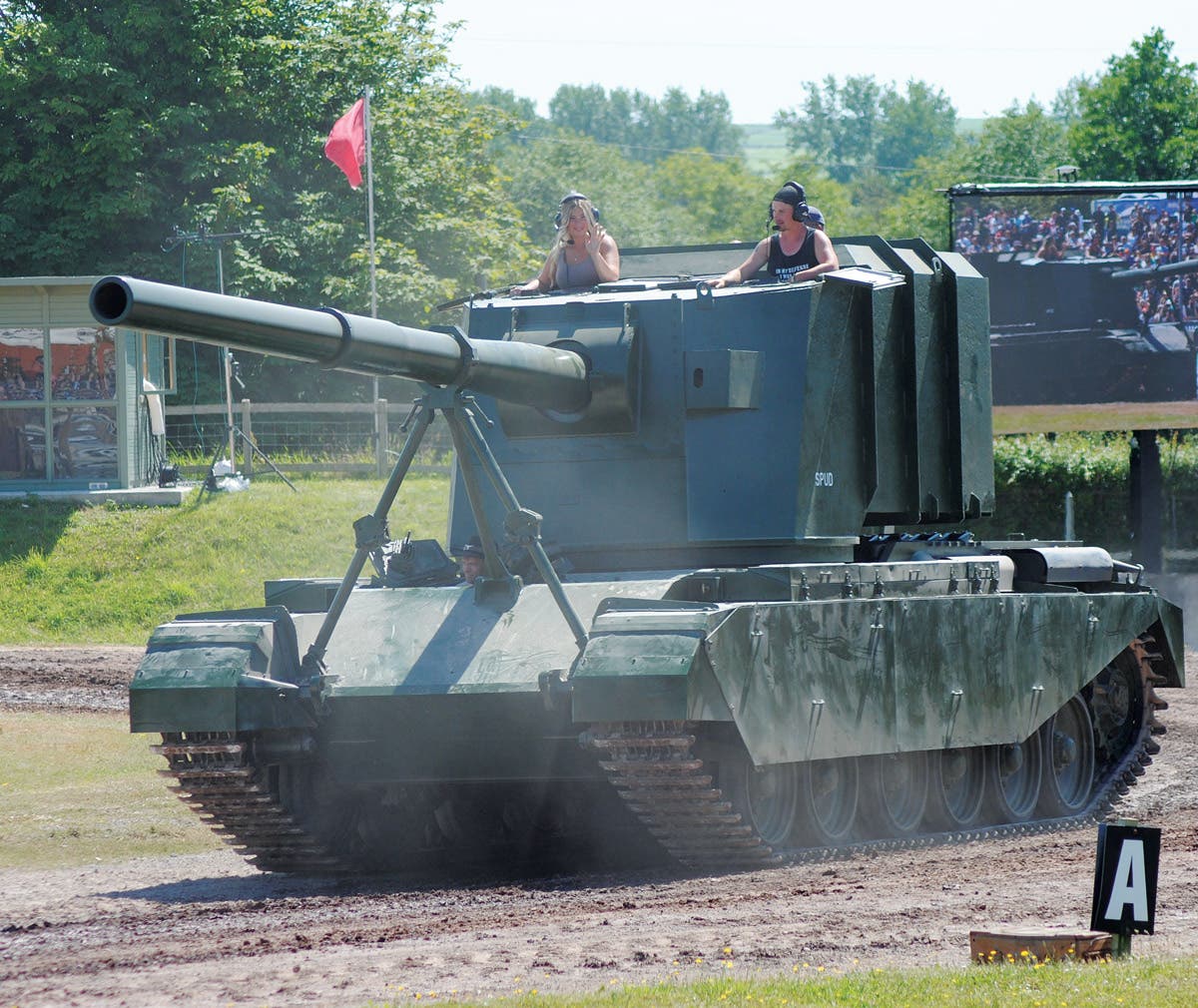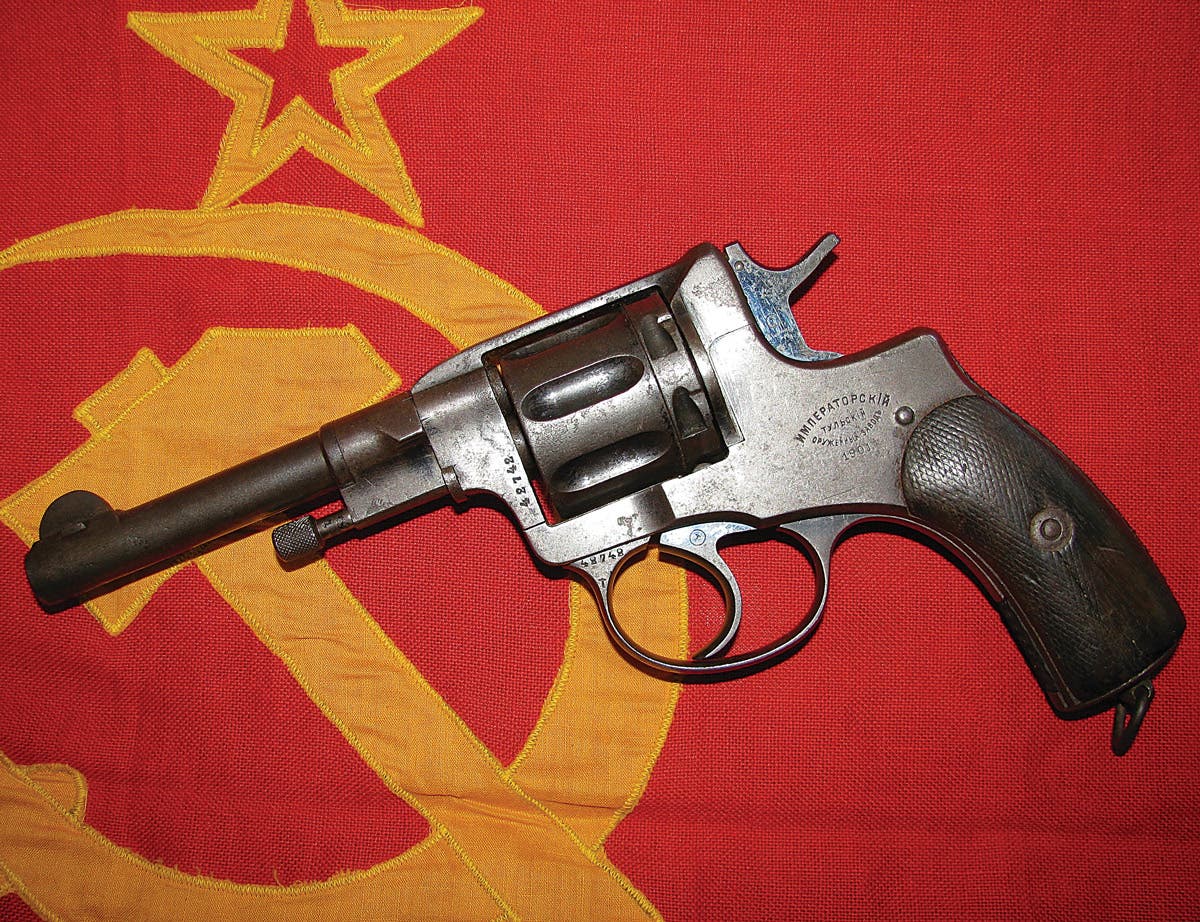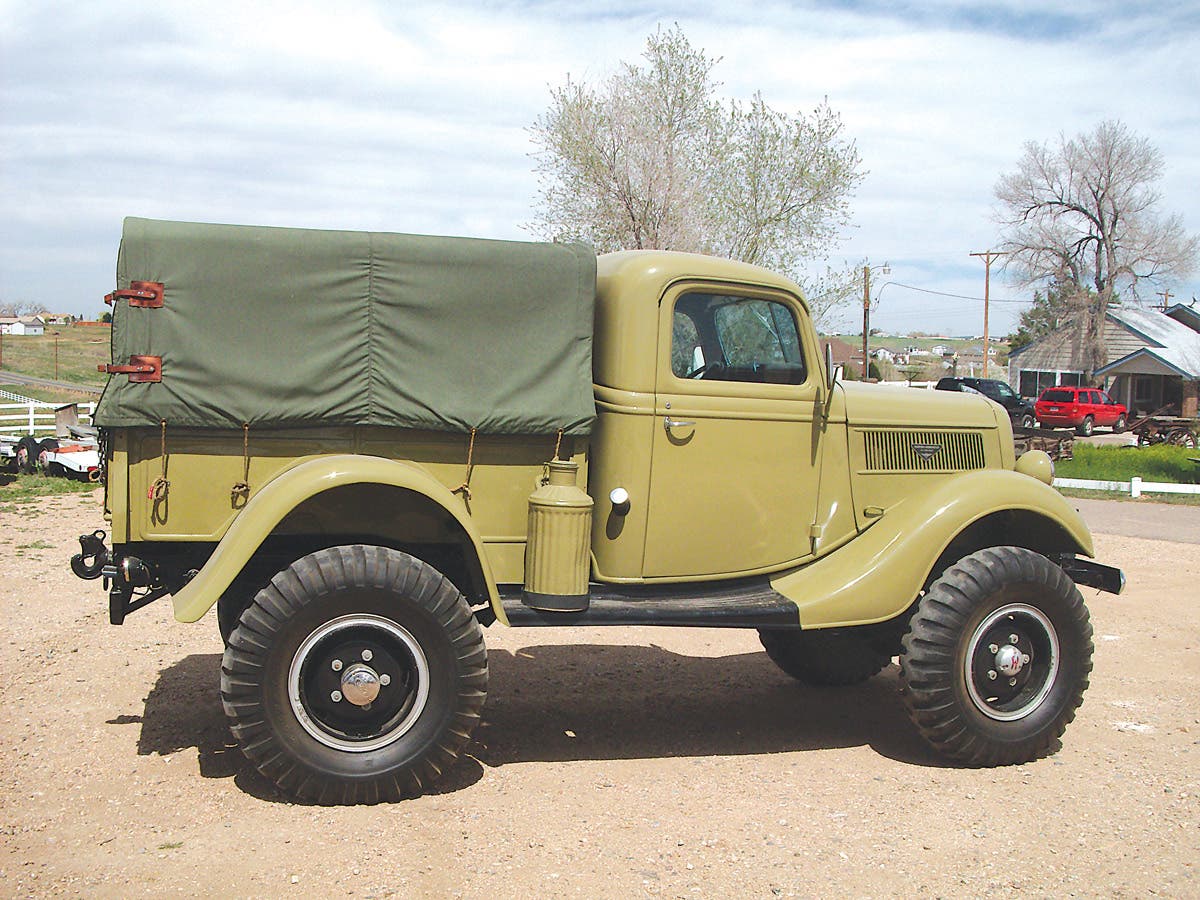Nothing wrong with practical: The Chevrolet G-506
The practically of ton-and-a-half trucks, especially the Chevrolet G-506 and its many variants were often overlooked.
Ask many farmers, ranchers, contractors and other working people what size truck larger than a pickup but smaller than a semi is the most practical and cost-efficient for most jobs and they will probably say a 1 1/2-ton truck. Ton-and-a-half trucks usually don’t cost significantly more to license, operate and maintain than most three-quarter and one-ton trucks, and when fitted with flatbeds are generally easier to load and unload than pickups. In most states, an ordinary automobile license is all that’s required to drive a ton-and-a-half truck; and most 1 1/2-ton trucks are about as easy to drive, maneuver and park as large dually pickups, and don’t require any special skills except the ability to back up using mirrors if necessary. With all these points in their favor it seems strange that after the end of WWII when the U.S. Military was evaluating requirements for tactical trucks, developing a new postwar fleet of M-series vehicles and getting rid of oddities such as four-ton and seven-ton trucks, they also dropped one-and-a-half-ton vehicles such as the Ford GTB Burma Jeep (G-622), the International Harvester M-3-4, the Dodge WC62 and WC63 (G-507), and the Chevrolet G-506. This left a significant gap between the new 3/4-ton Dodge M37 and the new M-series 2 1/2-ton trucks, the Reo M35 and the GMC M211.
It’s easy to understand why the postwar military chose to keep 2 1/2-ton trucks, since General Dwight Eisenhower had said, “The equipment most vital to our success in Africa and Europe (in WWII) were the bulldozer, the jeep, the 2 1/2-ton truck, and the C47 airplane.” Likewise, 3/4-ton vehicles, most notably the Dodge WC-52 and its many variants in the G-502 family, had certainly proven their usefulness. However, the practically of ton-and-a-half trucks, especially the Chevrolet G-506 and its many variants, was apparently dismissed as the U.S. entered the Cold War era of the late 1940s, ’50s, and ’60s. Maybe it was felt that a 3/4-ton M37 pulling its 3/4 ton M101 trailer was sufficient to handle a 1 1/2-ton load? While this concept works on paper, most people who have actually operated trucks know there are many loads that can’t be split in half. So, for example, an object weighing between one and two tons would either overload an M37 or require the waste of fuel and operating expense of a deuce-and-a-half. Getting rid of ton-and-a-half cargo trucks seems even less wise if one considers that most loads in tactical front-line operations are between 3/4- and 2 1/2-tons. Ironically, other armed forces, including our former enemies of WWII, recognized this fact and developed new ton-and-a-half trucks, such as the Mercedes-Benz Unimog.
In any case, until the début of the problematic and breakdown-prone M561 (G-874) Gama Goat in the early 1960s, the U.S. Military had no new tactical ton-and-a-half cargo trucks. There aren’t many U.S. tactical military vehicles that can be placed in civilian service, whether for work or play, without compromises and/or modifications. The most notable exceptions are jeeps and M37s. Indeed, next to the jeep, the M37 may be the most practical U.S. user HMV. For historic military vehicle enthusiasts who might be just entering the hobby, jeeps and M37s are probably the simplest, cheapest, and most practical vehicles to own. While 2 1/2-ton trucks — usually in the M35 or G-742 family — are becoming some of the most popular hobbyist HMVs, there are many folks who can’t afford or don’t want a vehicle that big. On the other hand, there are people looking for a practical, inexpensive, easy to restore, maintain and operate HMV larger than an M37 but smaller than a deuce. If you’re one of them, the Chevrolet G-506 may be worth considering.
Terms such as “inexpensive, simple,” and “practical” when applied to vehicles mean different things to different people. In the HMV hobby “inexpensive” usually refers to a vehicle that can be purchased in a mostly complete and often drivable condition for a price most working folks can afford. “Simple” generally means that one can obtain parts for a vehicle fairly easily and cheaply, and the vehicle can be repaired, rebuilt or restored, and serviced and maintained by anyone with basic mechanical skills and tools. “Practical” is harder to define, though it usually means an HMV that can be driven daily in any kind of weather, around town, on occasional long trips, or used for actual work, such as hauling, construction, wood-cutting, etc. This might also include camping and/or off-roading, as well as simply spending time with one’s family working on a project that every member can be a part of.
Many long-time HMV enthusiasts remember their early mistakes in the hobby, and one of the biggest disappointments is discovering that you’ve put a lot of time, money, and sweat into a vehicle that’s too large, too small, too specialized, too slow, too maintenance-intensive, or otherwise impractical for the use one originally had in mind. Of course, if one simply wants to restore or collect historic military vehicles, this usually isn’t a problem. Even so, a new HMV hobbyist might be wise to avoid very rare or limited production vehicles until they gained hands-on experience with more popular types.
For those hoping to make a profit by flipping HMVs, one should keep in mind that just because a certain vehicle is rare or unusual doesn’t necessarily mean that it’s more valuable or desirable than a more common type. For example, if one goes to an old car swap meet, one will usually find that while Studebakers and Hudsons are rare compared to Fords and Chevys, it will be the latter that usually bring the highest prices. Likewise, at most military vehicle shows and meets, rare WWII vehicles such as Internationals, or specialized variants such as bomb service or dump trucks are usually not as much in demand as basic cargo models. Of course, if you really want a certain vehicle then you will probably buy it, but in general a new HMVer would probably be smart to avoid very rare or specialized vehicles.
Many HMV hobbyists began with a jeep. This is probably the least expensive and most practical way to enter the hobby. One just about can’t go wrong with a jeep if it’s obtained for a reasonable price. As far as parts, there are so many reproduction as well as remaining stocks of NOS (new old stock) parts available that one could build a complete jeep, although it wouldn’t be an actual piece of history.
Of course, an HMV newbie doesn’t have to start with a jeep. Anyone wantings to use a vehicle for work or as a daily-driver, should consider that vintage military jeeps —- which are quarter-ton trucks — can’t haul much cargo and aren’t well-suited for long-distance travel; this coming from someone who did make many long trips in jeeps. Anyone who wants to start their HMV experience with something a little larger than a jeep might consider a WWII 3/4-ton Dodge WC or an M-series (post-WWII) Dodge M37. The M37, especially, fits into the category of being inexpensive, simple and practical. Farther up the scale in size is the Kaiser M715 one-and-one-quarter-ton truck, which is very similar to the M37 in regard to being inexpensive, simple and practical, though parts are much harder to find than for an M37. Then there are various CUCVs, (Commercial Utility Cargo Vehicle), such as the Dodge M880 and Chevrolet M1008, which are certainly practical by all definitions and offer modern-day comforts as well, though without the vintage look and persona of dedicated military tactical trucks. And there are many “base” and “stateside” trucks that can boast of once wearing Army olive-drab, Marine Corps green, Navy haze gray or Air Force strata blue.
Still not big enough for your wants or needs?
While, 2 1/2-ton trucks are one of the most popular HMV hobby vehicles, and some newbies are only charmed into buying one because they believe they’re getting more truck for their bucks. This is true in one sense because there are so many deuces available that their selling prices are often far lower than restored jeeps or M37s. However, while a deuce may be inexpensive to buy, it may not prove cheap to service, maintain and operate, especially with today’s fuel and oil prices. It’s also worth noting that most common deuces have 10 -- count ’em, 10 -- large pricey tires… plus the spare. While most deuces are fairly simple to repair, and replacement parts are plentiful, they may not be as fun as a smaller vehicle for family project, especially if you have young children. As far as being practical, one should definitely do their homework in regard to performance and operating costs if buying a deuce for actual work.
Does this mean that one’s only options for a practical, tactical U.S. HMV larger than an M37 but smaller than a deuce are the Kaiser M715 or M561 Gama Goat? While M715s are great trucks for family projects and can be used for work or play, they have a somewhat troublesome engine, and replacement engines and engine parts are very scarce. As to the M561, it’s a very specialized vehicle, painfully prone to breakdowns, parts are hard to find, and – I’ve owned one -- about as enjoyable to drive as a Caterpillar 35 with no muffler and a milk crate for a seat. So, one might consider the ton-and-a-half Chevrolet G-506. This truck fits all the definitions of being inexpensive, simple and practical, along with having rugged tactical looks and a distinguished history of military service.
The Chevrolet Division of General Motors produced about 160,000 ton-and-a-half tactical trucks between 1940 and 1945. The majority were closed-cab cargo, two-axle, six-wheel, 4x4 models, though several common variants were also built, including a bomb-service vehicle having just four wheels. There was also a large panel truck and a telephone maintenance body for the Signal Corps. In addition, there were several types of crash and fire truck bodies, an airfield lighting vehicle, and a long-wheelbase cargo truck, as well as some COE (cab-over-engine) models.
The most common models and variants were:
G-7107: basic cargo truck - 145 inch wheelbase
- G-7117: same truck with a front-mounted winch
- G-7106: dump truck
- G-7116: same truck with a front-mounted winch
- G-7105: panel truck
- G-7113: truck tractor
- G-7173: telephone maintenance truck
- G-7163: pole-setter truck
- G-7127: long-wheelbase cargo truck - 175 inch wheelbase
- G-7128: bomb service truck (four wheels)
- G-7193: cab and chassis
- G-7133: crash and fire truck
- G-7143: airfield lighting truck
All models were powered by the rugged and dependable Chevy 235-cid six-cylinder inline OHV engine rated for 83 hp at 3100 RPM, and had four-speed non-syncromesh (spur gear) transmissions – often called crash or crunch boxes -- two-speed transfer-cases, and were usually fitted with 7.50 x 20 tires. Six-volt electrical systems were standard, though some Signal Corps models had 12-volt systems. Cargo models were fitted with either steel or (later during WWII) wooden beds. Most models had vacuum-boosted brakes. For this article, we’ll focus on the most common G-506 cargo type.
The truck’s design is simple and eye-pleasing, construction is basic nuts and bolts and easy to work on with a minimum of skills and tools. Most parts are still fairly plentiful from HMV and civilian sources, and few components are so large or heavy that they can’t be handled with a hand-truck and floor and transmission jacks. With the exception of bomb service and a few specialized variants, most of these trucks had closed cabs. While a closed cab may seem like a drawback on balmy summer days or if out exploring the desert, most people would probably agree that a closed cab is best for all-around use. For operation on hot days the windshield can be opened for fresh air. In cold or wet weather, there’s a lot to be said for being able to close a real door and roll up a real window. And one may easily install either a vintage or modern aftermarket heater. The cab is basically the same as those used on most civilian Chevy and GMC trucks up until about 1947. It’s well-constructed, not especially prone to rust-outs, and comfortable to be in for long periods of time.
Another plus is that most of the cab parts, such as doors, door handles, locks, glass, and even complete cabs can still be found at many older wrecking yards, as well as at most vintage car and truck swap meets. The bench seat will accommodate three friendly average-size adults. The driver’s position is good for most body-types and the seat is adjustable. The steering wheel is large and well-placed, and steering effort is minimal for a vehicle of its size without power steering. The controls and instruments are close to hand and user-friendly. All-around driver visibility is good, and with two fair-sized mirrors, backing up isn’t a problem even with the rear window blocked by canvas or cargo. The spur-gear transmission may take some getting used to because it must be double-clutched, but it’s tough enough to stand up to practice. Since this is the same transmission that was used on most 1/2-ton to 2-ton GMC and Chevrolet civilian trucks from the 1930s up to the late 1940s, replacements are still plentiful.
The “stove-bolt six” 235-cid engine is legendary for its ruggedness and dependability, and was used in Chevrolet civilian cars and trucks up into the 1960s. The 235 is one of the easiest of any older American engines to work on, rebuild, and get parts for. Drive train components are generally long-lived and trouble free if regularly lubed and maintained. Maintenance and repair manuals are readily available in the HMV world, as are most parts and accessories.
With its rugged military grille and front sheet-metal, the G-506 is a good-looking truck. With correct WWII paint, canvas, and markings it’s an impressive historical showpiece. The military body parts are still fairly easy to find through HMV sources, though the hood side-panels were often removed by civilian owners and lost, and these may be a few of hardest body parts to locate. Side panels from GMC CCKW trucks will fit; however, CCKW panels have 12 louvers while Chevy panels have six, assuming one wants to do a full restoration. In this case it should also be noted that most early production trucks had “Chevrolet” embossed on the six-louver panels.
If you are buying a cab and chassis, or a G-506 that was modified into a flatbed — probably the most common modification — locating a good cargo bed may be difficult. Like most WWII vehicles, a stock wooden bed is almost impossible to find, and a steel fixed-side cargo bed, as was used on the G-506, is not very practical in civilian use, so many either had their sides cut off or were replaced with flatbeds.
The cargo beds may still be found if one hunts long and hard: many were used as dump beds on other trucks, and may often be discovered in truck wrecking yards disguised as something else. For complete restoration, all accessory items, such as pioneer tools, fire extinguishers, decontaminators, and blackout lights can still be found.
Of the four basic WWII U.S. vehicles in the 1 1/2-ton range, the G-506 is the only one that, in stock configuration, with its 7.50-20 tires, can be safely driven at speeds above 45 mph. I drove one of these trucks from the California coast up into the High Sierras and found that it would cruise on the freeway between 50 and 55 mph.
For those more interested in everyday use than in full restorations, 8.25-20 or even 9.00-20 tires can be fitted for a comfortable 55 mph without sacrificing much power. Some people have replaced the Chevrolet 235 engine with a GMC 270, or even a 302. This is a fairly simple conversion (I’ve done several) and noticeably increases the truck’s power. It’s also relatively easy to install a five-speed overdrive transmission from a CCKW for added top speed. For HMV enthusiasts looking for large, inexpensive, simple and practical WWII vehicle, one might consider a G506.
Military trucks interest you? Her are a few more articles for your reading enjoyment.



